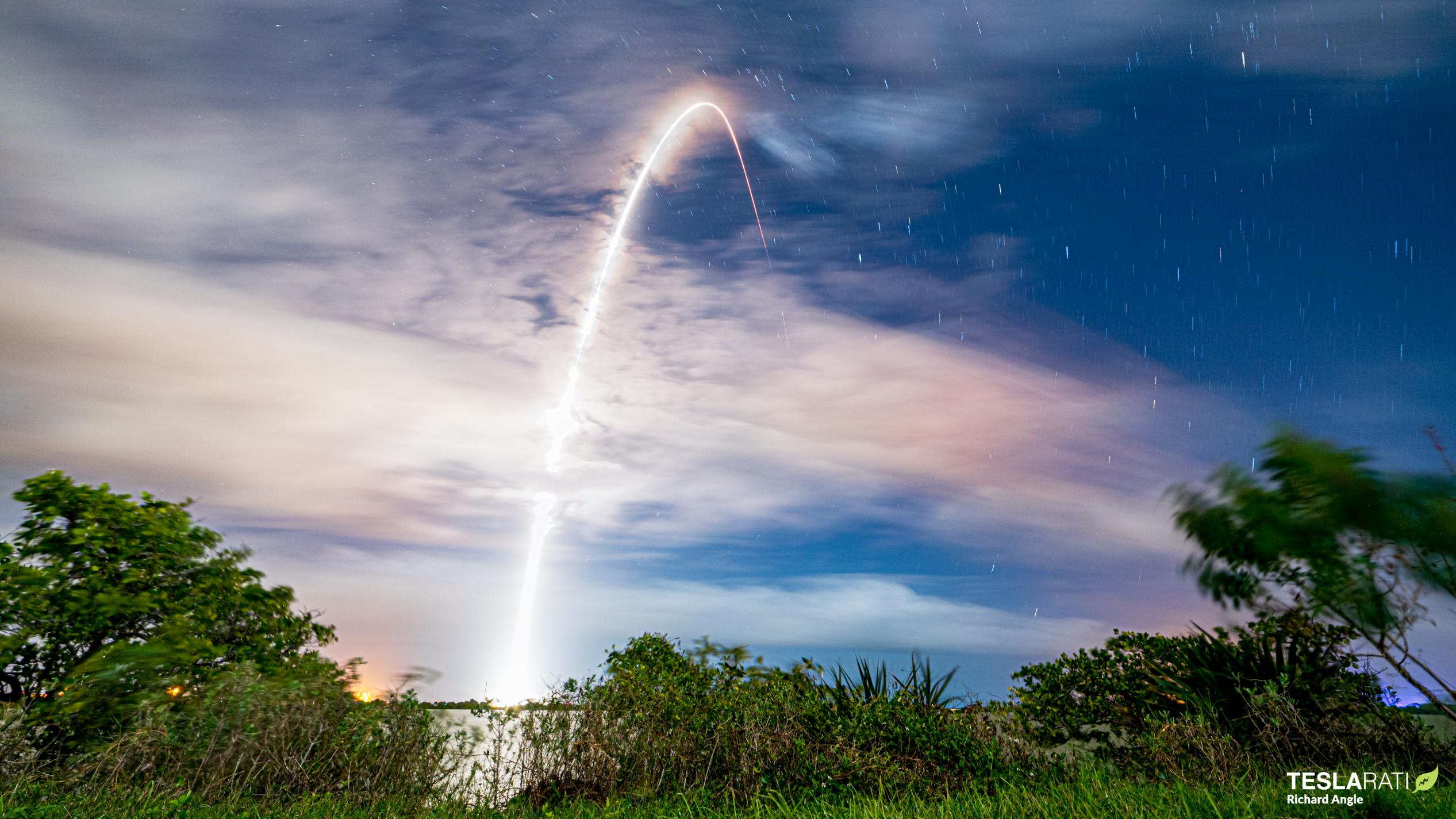
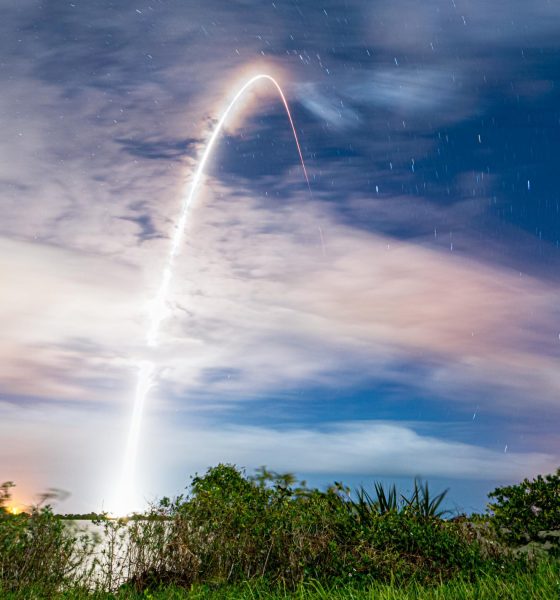
News
A SpaceX rocket just aced its seventh launch and landing for the first time
For the first time ever, a SpaceX Falcon 9 rocket booster has successfully completed seven orbital-class launches and landings, leaving the company as few as three flights away from achieving its longstanding reusability goal.
Ending two days of “mission assurance” and weather-related delays, Falcon 9 booster B1049.6, a new expendable upper stage (S2), two flight-proven fairing halves, and 60 Starlink v1.0 satellites lifted off at 9:13 pm EST on November 24th. As usual, the rocket appeared to perform flawlessly, sailing through main engine cut-off (MECO), second stage start (SES), and first stage reentry and landing. Falcon 9 successfully touched down on drone ship Of Course I Still Love You (OCISLY) around 8.5 minutes after liftoff, officially making booster B1049 the first to complete (and survive) seven orbital-class launches.
For SpaceX, the success means that the company now has a new rocket booster “fleet leader,” referring to the fact that B1049.7 will now serve as a reference point and treasure trove of data for other SpaceX rockets pushing towards the same reusability milestone. Reuse record aside, SpaceX’s flawless Starlink-15 launch also pushed the company passed an arguably equally – if not more – important operational milestone.
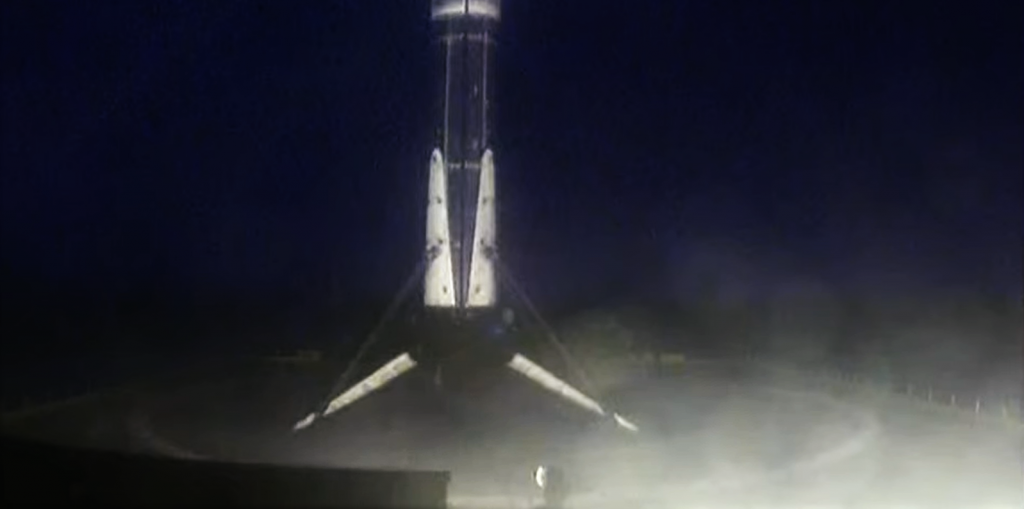
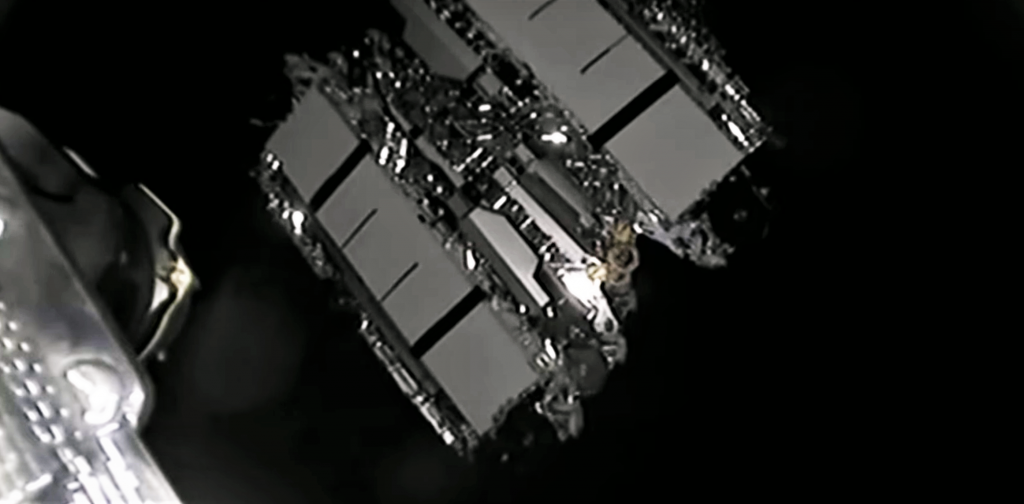
Specifically, November 2020 is now SpaceX’s first four-launch month ever, handing Falcon 9 an achievement that only a few rockets in history can lay claim to. Crucially, extrapolated out to a full calendar year, achieving four orbital launches in one month directly implies that SpaceX is well within reach of an annual cadence of 40 launches or more.
Coming just ~6 weeks after CEO Elon Musk revealed an ambitious target of 48 launches in 2021, SpaceX has certainly delivered its first four-launch month at the best possible time. Even if four-launch months are not immediately sustainable, the achievement brings significant confidence that SpaceX will be able to crush its already record-breaking 2020 launch cadence next year.
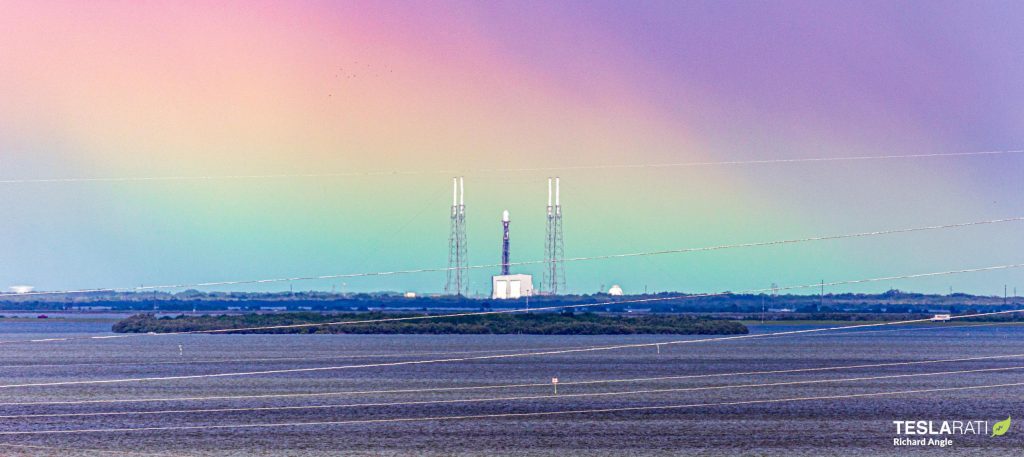
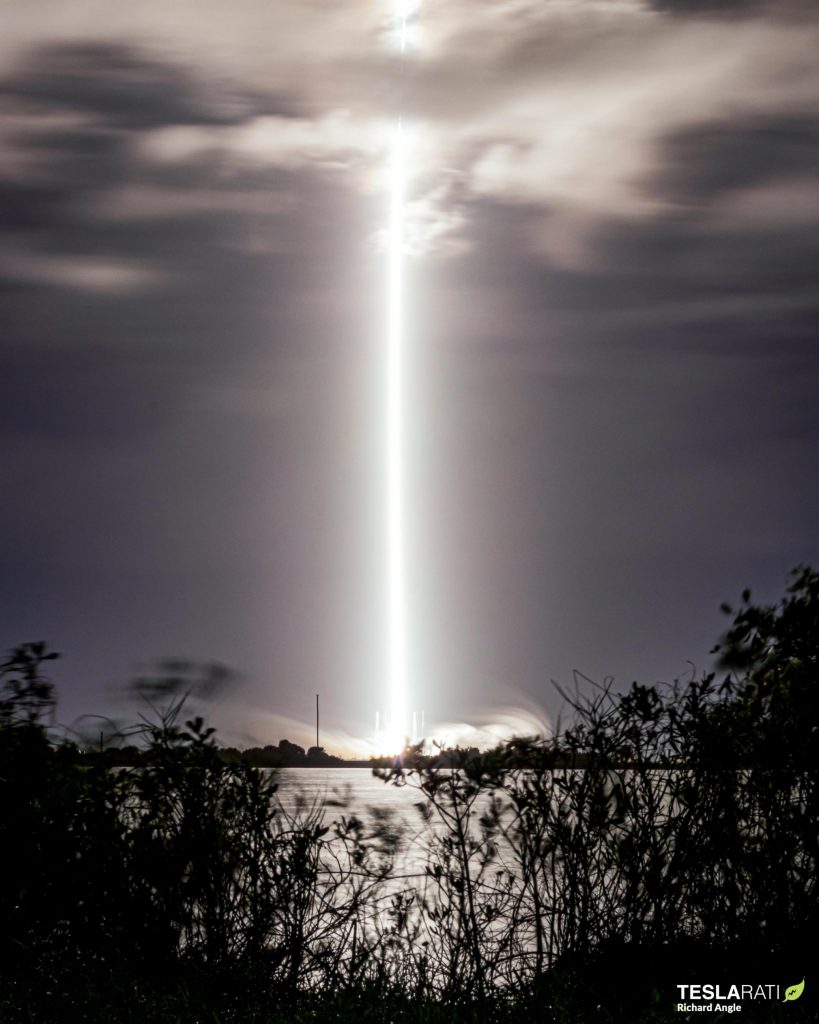
Technically, Starlink-15’s completion means that SpaceX has actually managed 4 launches in 19 days and 7 launches in the last ~50 days, representing an average of one launch every 4.75-7 days. Extrapolated over a full year, SpaceX has effectively demonstrated that its Falcon 9 infrastructure is already capable of achieving an annual cadence of 50-75 launches even if several technical bugs or weather delays arise every month.
Reusability is as essential as ever for SpaceX’s extremely ambitious launch cadence targets. The introduction of three new Falcon 9 boosters in just the last three weeks will almost certainly provide some relief to SpaceX’s hardworking rocket fleet while also offering even more capacity to strive towards an annual average of four or more launches per month. B1049 effectively opening up a new tier of reusability and taking SpaceX just three steps away from its original ten-flight reusability goal also serves as a force multiplier for the fleet, adding at least another seven launches of capacity.

Now eight boosters strong, SpaceX’s flight-proven Falcon 9 fleet could theoretically support a rough average of one launch per week, though the flight rate of three boosters (B1061, B1062, and B1063) will be somewhat handicapped due to their recent assignments to several major NASA and US military launches. Ultimately, while SpaceX has a plenty of work left in front of it, the company is well on its way to becoming the world’s most prolific and experienced launch provider by a healthy margin.

News
Tesla FSD fleet is nearing 7 billion total miles, including 2.5 billion city miles
As can be seen on Tesla’s official FSD webpage, vehicles equipped with the system have now navigated over 6.99 billion miles.

Tesla’s Full Self-Driving (Supervised) fleet is closing in on almost 7 billion total miles driven, as per data posted by the company on its official FSD webpage.
These figures hint at the massive scale of data fueling Tesla’s rapid FSD improvements, which have been quite notable as of late.
FSD mileage milestones
As can be seen on Tesla’s official FSD webpage, vehicles equipped with the system have now navigated over 6.99 billion miles. Tesla owner and avid FSD tester Whole Mars Catalog also shared a screenshot indicating that from the nearly 7 billion miles traveled by the FSD fleet, more than 2.5 billion miles were driven inside cities.
City miles are particularly valuable for complex urban scenarios like unprotected turns, pedestrian interactions, and traffic lights. This is also the difference-maker for FSD, as only complex solutions, such as Waymo’s self-driving taxis, operate similarly on inner-city streets. And even then, incidents such as the San Francisco blackouts have proven challenging for sensor-rich vehicles like Waymos.
Tesla’s data edge
Tesla has a number of advantages in the autonomous vehicle sector, one of which is the size of its fleet and the number of vehicles training FSD on real-world roads. Tesla’s nearly 7 billion FSD miles then allow the company to roll out updates that make its vehicles behave like they are being driven by experienced drivers, even if they are operating on their own.
So notable are Tesla’s improvements to FSD that NVIDIA Director of Robotics Jim Fan, after experiencing FSD v14, noted that the system is the first AI that passes what he described as a “Physical Turing Test.”
“Despite knowing exactly how robot learning works, I still find it magical watching the steering wheel turn by itself. First it feels surreal, next it becomes routine. Then, like the smartphone, taking it away actively hurts. This is how humanity gets rewired and glued to god-like technologies,” Fan wrote in a post on X.
News
Tesla starts showing how FSD will change lives in Europe
Local officials tested the system on narrow country roads and were impressed by FSD’s smooth, human-like driving, with some calling the service a game-changer for everyday life in areas that are far from urban centers.

Tesla has launched Europe’s first public shuttle service using Full Self-Driving (Supervised) in the rural Eifelkreis Bitburg-Prüm region of Germany, demonstrating how the technology can restore independence and mobility for people who struggle with limited transport options.
Local officials tested the system on narrow country roads and were impressed by FSD’s smooth, human-like driving, with some calling the service a game-changer for everyday life in areas that are far from urban centers.
Officials see real impact on rural residents
Arzfeld Mayor Johannes Kuhl and District Administrator Andreas Kruppert personally tested the Tesla shuttle service. This allowed them to see just how well FSD navigated winding lanes and rural roads confidently. Kruppert said, “Autonomous driving sounds like science fiction to many, but we simply see here that it works totally well in rural regions too.” Kuhl, for his part, also noted that FSD “feels like a very experienced driver.”
The pilot complements the area’s “Citizen Bus” program, which provides on-demand rides for elderly residents who can no longer drive themselves. Tesla Europe shared a video of a demonstration of the service, highlighting how FSD gives people their freedom back, even in places where public transport is not as prevalent.
What the Ministry for Economic Affairs and Transport says
Rhineland-Palatinate’s Minister Daniela Schmitt supported the project, praising the collaboration that made this “first of its kind in Europe” possible. As per the ministry, the rural rollout for the service shows FSD’s potential beyond major cities, and it delivers tangible benefits like grocery runs, doctor visits, and social connections for isolated residents.
“Reliable and flexible mobility is especially vital in rural areas. With the launch of a shuttle service using self-driving vehicles (FSD supervised) by Tesla in the Eifelkreis Bitburg-Prüm, an innovative pilot project is now getting underway that complements local community bus services. It is the first project of its kind in Europe.
“The result is a real gain for rural mobility: greater accessibility, more flexibility and tangible benefits for everyday life. A strong signal for innovation, cooperation and future-oriented mobility beyond urban centers,” the ministry wrote in a LinkedIn post.
News
Tesla China quietly posts Robotaxi-related job listing
Tesla China is currently seeking a Low Voltage Electrical Engineer to work on circuit board design for the company’s autonomous vehicles.

Tesla has posted a new job listing in Shanghai explicitly tied to its Robotaxi program, fueling speculation that the company is preparing to launch its dedicated autonomous ride-hailing service in China.
As noted in the listing, Tesla China is currently seeking a Low Voltage Electrical Engineer to work on circuit board design for the company’s autonomous vehicles.
Robotaxi-specific role
The listing, which was shared on social media platform X by industry watcher @tslaming, suggested that Tesla China is looking to fill the role urgently. The job listing itself specifically mentions that the person hired for the role will be working on the Low Voltage Hardware team, which would design the circuit boards that would serve as the nervous system of the Robotaxi.
Key tasks for the role, as indicated in the job listing, include collaboration with PCB layout, firmware, mechanical, program management, and validation teams, among other responsibilities. The role is based in Shanghai.
China Robotaxi launch
China represents a massive potential market for robotaxis, with its dense urban centers and supportive policies in select cities. Tesla has limited permission to roll out FSD in the country, though despite this, its vehicles have been hailed as among the best in the market when it comes to autonomous features. So far, at least, it appears that China supports Tesla’s FSD and Robotaxi rollout.
This was hinted at in November, when Tesla brought the Cybercab to the 8th China International Import Expo (CIIE) in Shanghai, marking the first time that the autonomous two-seater was brought to the Asia-Pacific region. The vehicle, despite not having a release date in China, received a significant amount of interest among the event’s attendees.








